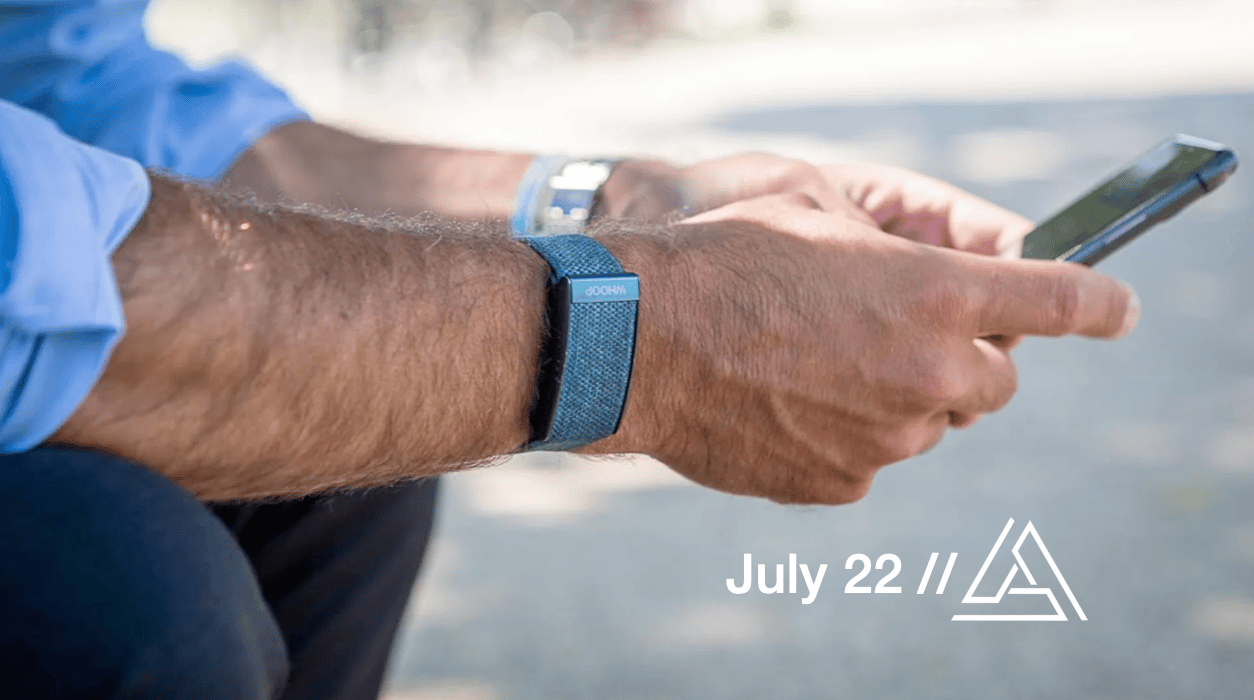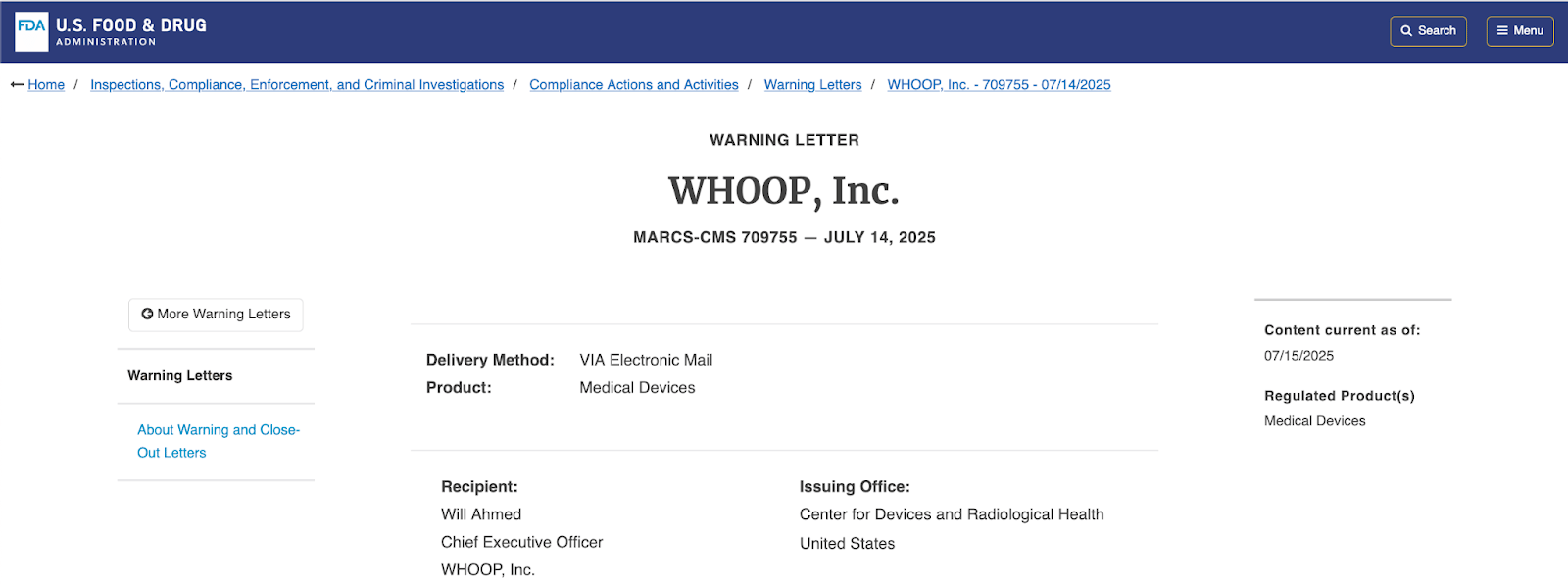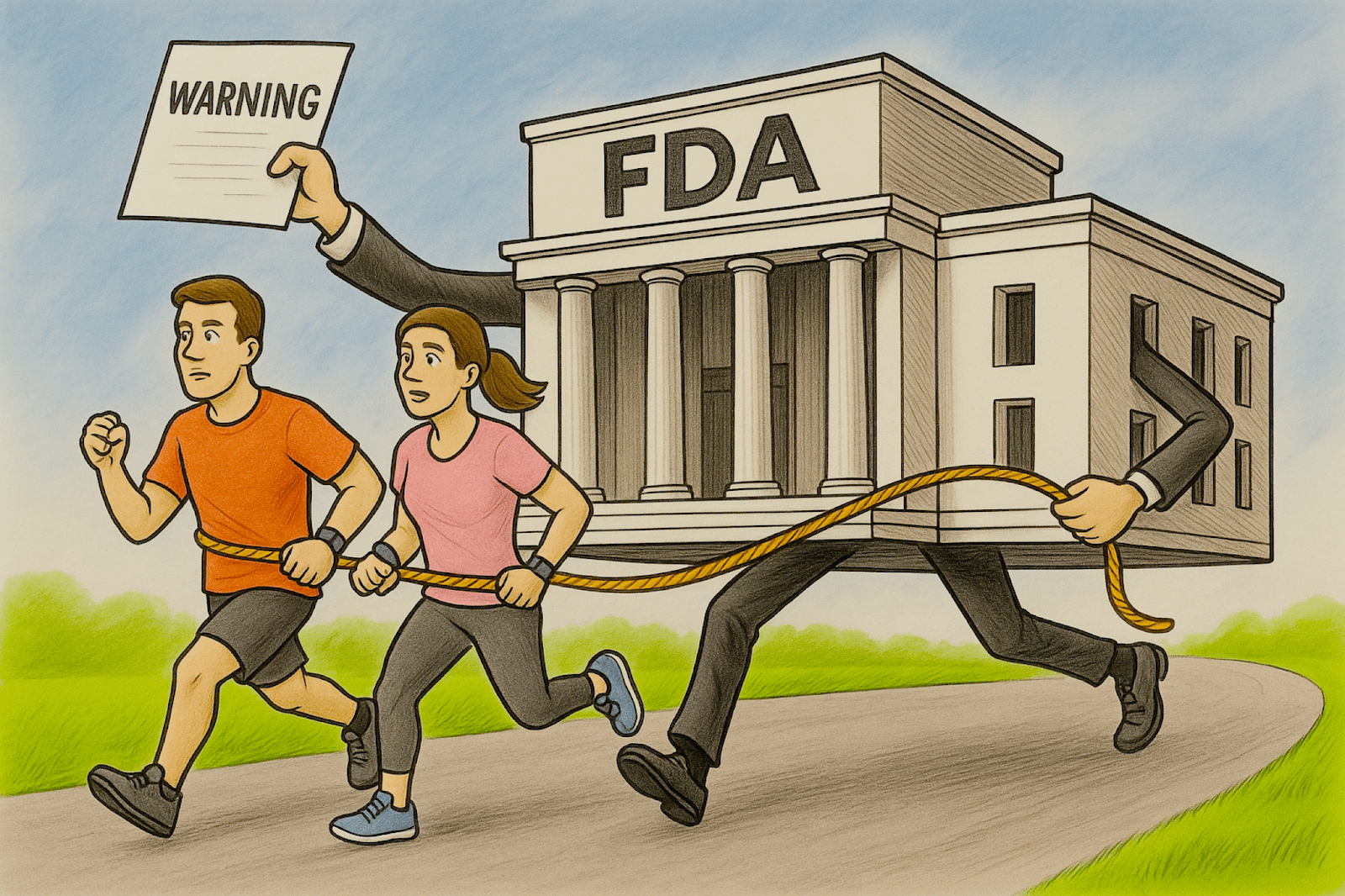- ALFA Institute
- Posts
- 🏃🏻INTERFERENCE: How the FDA is Undermining An Effort to MAHA
🏃🏻INTERFERENCE: How the FDA is Undermining An Effort to MAHA
Good morning. Today, rather than bring you two or three pieces that are tech-grounded but a bit unrelated, we want to focus on just one. We know your time is valuable and appreciate you lending a little of it to us. -Sparks

Earlier this spring, in a fluorescent lit, Cold War-era conference room, HHS Secretary Robert F. Kennedy Jr. excitedly spoke about the future of health. To the dozen leaders of health technology companies present, Kennedy said their innovations would help turn us from “a sick care system to a health care system.”
For Will Ahmed, founder of WHOOP, this call to arms was not merely rhetorical. The wearable technology company he started thirteen years ago provides continuous biometric insights into how recovery, strain, and sleep interact. It’s a tool used by professional athletes, elite military personnel, healthcare workers, and everyday Americans to better understand their health and make decisions to optimize it.
The roundtable was a moment of alignment: government embracing innovation that is rapidly improving people’s lives.
In fact, Secretary Kennedy explicitly called out the promise of wearables—and the ability to deliver accurate, continuous data on blood pressure—as an essential tool to “provide the transparency and the capacity for Americans to take control of their own health.”
Just days before, WHOOP released its latest technology–which included a feature called “Blood Pressure Insights” (BPI) to help users understand how blood pressure relates to sleep, energy, and stress.
Unfortunately, the spirit evoked from HHS leadership a couple months ago appears to have evaporated.
Last week, the FDA sent a warning letter to the company, demanding they pull the plug on its BPI feature or face enforcement actions.
So, what changed?

A PARADIGM OF THE PAST
The agency’s regulators continue to evaluate this health metric through a paradigm of the past.
In its letter, the agency said: “a blood pressure range or midpoint estimation, like a real-time reading, is inherently associated with the diagnosis of hypo- and hypertension.”
Translation: if you mention blood pressure, you’re practicing medicine. And unless your wearable goes through a full medical device approval process, it’s off limits.
This is an outdated way of thinking.
In recent years, the FDA has appropriately acknowledged that measurements like respiratory rate and blood oxygen saturation–while medically relevant–can also offer valuable insights in wellness and performance outside of a clinical context.
And similar to past measurements, new research shows blood pressure readings can be used as a dynamic, day-to-day performance metric influencing sleep, recovery, cognition, and fitness
But somehow, blood pressure still gets red-taped. Same utility, different standard.
The irony is that this is precisely the kind of feature Kennedy had in mind when he talked about regulatory reform. His stated goal was to “sweep away barriers” and let high-integrity health tech companies scale their impact.
If anything, WHOOP’s approach—providing contextualized insights, not diagnostic claims—should be the model. In fact, empowering Americans to monitor, understand, and respond to their own health signals is not just common sense—it’s foundational to MAHA.

Meanwhile, the same week the FDA warned WHOOP, it approved JUUL—a popular nicotine delivery device–and cleared the product’s return to market.
Nicotine pods? Approved. But data to understand how that nicotine might affect your heart and stress levels? Too dangerous.
From where we sit, the message to founders was clear: innovation is welcome—so long as it does not challenge entrenched bureaucratic frameworks.
THE PATH FORWARD
Unlike many other issues we discuss at ALFA, there is no need for Congress to intervene or courts to arbitrate on this matter. Instead, the FDA can simply realign its approach with the rest of the administration by updating its interpretation of how wearables fit into the spectrum of health tools. The agency already has a precedent for carving out performance and wellness use cases from diagnostic claims, and this tool should be no different.
From day one, the White House has made regulatory modernization a central plank of its innovation agenda. Meanwhile, health tech is one of the few segments of health care policy with cross-aisle bipartisan energy. If the FDA wants to support that momentum—not stifle it—it needs to get out of its own way.
Simply put, we’re at a moment where the best tech can materially improve health outcomes, reduce long-term costs, and increase agency for the average American.
The question is: will the regulators let it happen?
As always, if you are a technology company or policy advisor working on something that pulls society forward, drop us a line at [email protected] or subscribe here.
Thanks for Reading and Have a Great Day
🇺🇸🇺🇸🇺🇸
